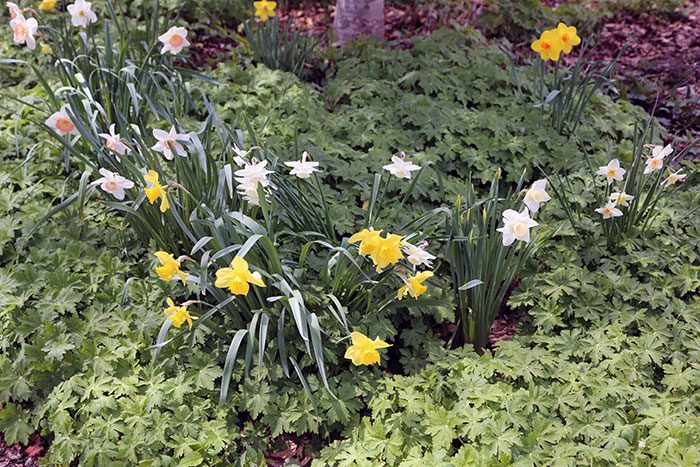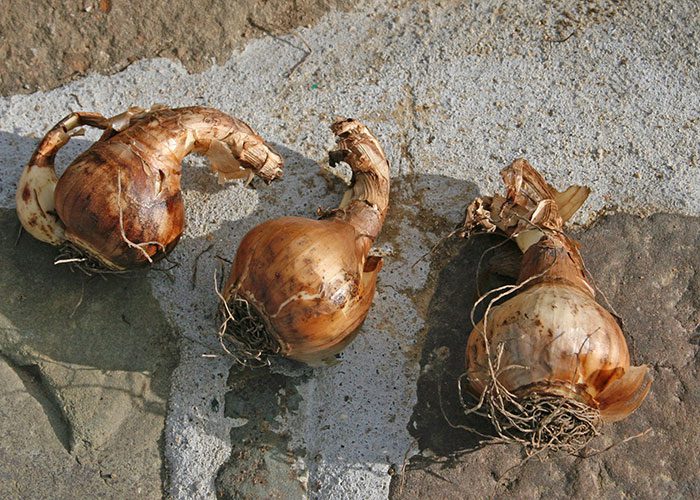“I Planted My Bulbs Upside Down!”
“I Planted My Bulbs Upside Down!”
And Other Bulb Questions or Problems.
Fall is the time for planting spring-flowering bulbs! This is one of the nicest times to be outside on the Cape and Islands, and putting bulbs in the ground is an enjoyable autumnal activity that reaps beautiful benefits in the spring. But people often have questions about their bulbs, and at Country Garden we’re here to offer solutions.
- How deep do bulbs need to be planted? The standard for years was three times the size of the bulb…so a bulb two inches tall, for example, was to be planted at least six inches deep. Ongoing research at Cornell University’s Horticultural Department has shown, however, that deeper isn’t better. In the Cornell test fields the tulip bulbs that were planted only three inches deep and covered with a couple of inches of mulch returned more reliably in future years than those that were placed deeper in the dirt. This is good news for Cape gardeners since in many gardens if you dig down six inches or deeper you hit pure sand! Aim for covering your bulbs with three or four inches of soil, and they should be fine.

- Can I plant bulbs in with groundcover plants or perennials? Yes, but some groundcovers such as Pachysandra and English ivy are so vigorous that they might out-compete the bulbs. Planting bulbs in between perennials or in front of shrubs is perfect, but allow for the future growth of those plants.

- The squirrels keep digging my bulbs up after I plant them! Squirrels are often attracted to freshly dug soil – they dig into the area looking for a tasty grub or a treat hidden by another squirrel. Although you might read that a good method to avoid this is to plant your bulbs in wire cages, that’s an unnecessary bother. The best way to discourage squirrels digging your bulbs is to water the area well right after the bulbs have been planted. This settles the soil so that the squirrels won’t be able to tell you’ve just planted in the area. Another way to discourage this behavior is to lay some lengths of chickenwire over the area you’ve planted and leave it in place for a couple of weeks.

- My bulbs are sending up foliage in the fall! Should I protect it? The most common bulb that sends up fall growth is the grape hyacinth. If these, or other bulbs, poke up in the fall just ignore them. Usually any green foliage is produced for a reason: creating energy for the bulbs and root systems. The shoots will be fine and although they might get a bit winter worn, the plants will grow new leaves and bloom in the spring.
- I planted my bulbs upside down!!! Do I need to dig them up? Bulbs should be planted pointy-side up, but if you placed them upside down don’t worry. Bulbs know “which way is up” and they will turn themselves around.

So go ahead and poke some bulbs in the ground. You’ll be delighted with the spring color after the winter.
Posted in Uncategorized
Subscribe To Our Newsletter
Sign up for our weekly email about sales and events.
